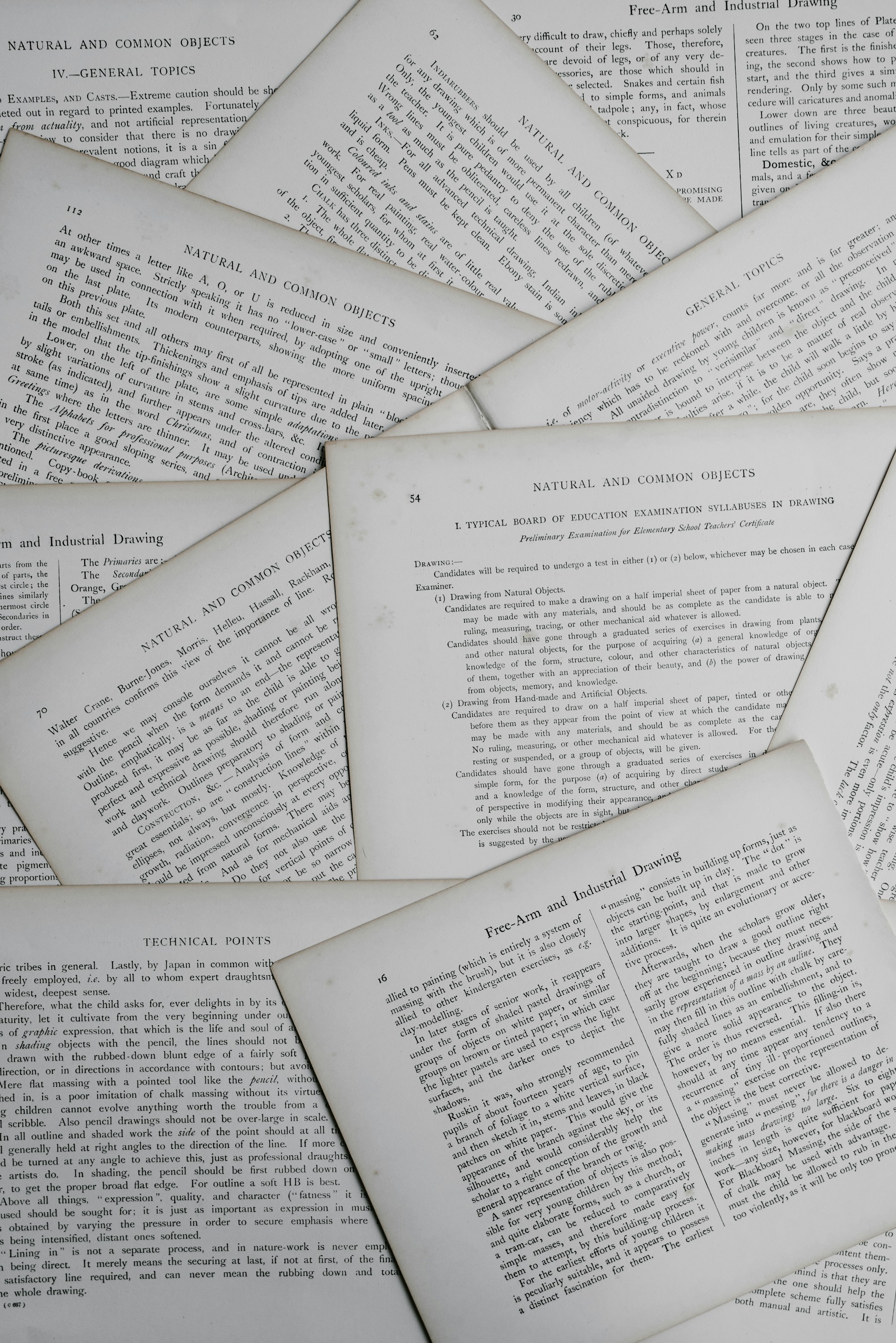The Ultimate Guide to APA Style Writing
The APA method of documentation has been widely used since it's conception. Known for it's consistency, organization, and writing style and language, it continues to be a go-to guide for researchers and students alike. Read to learn more about what the APA guideline is.

What is APA?
APA is a method of documentation of resources used by the American Psychological Association. It is a set of guidelines for writing and formatting research papers. This style of writing research papers is used predominantly in the Social Sciences, like Psychology, Anthropology, Sociology, as well as education and other fields.
This set of guidelines includes rules for what a research paper must contain and how it should be written. It outlines guidelines for nearly all aspects of manuscript formatting, from font choice to margins and punctuation.
When adopting the APA style of documentation, two things stand out characteristically and also need to be kept in mind: the in-text citations and the reference page.
In-text citations will use the author's name and the date within your research paper. These citations will refer back to the reference page at the end, which lists all the sources that you may have used in your research paper.
The History of APA
The APA Style of formatting originated in 1929, when scholars and researchers from multiple Social Science fields convened to establish a set of writing procedures or style guidelines that would codify elements of scientific writing to increase the ease of reading. They published their guidelines in the Psychological Bulletin as a set of guidelines for writing processes and procedure to which reference might be made in cases of doubt.
Photo by Annie Spratt / Unsplash
Since this, the depth and length of the Publication Manual has been developed in response to the needs of researchers, students, and teaching faculty across the social and behavioral sciences, natural sciences, humanities, and many more.
The Specifics of APA Citations
The APA citation style follows a specific format. In APA papers, writers cite citations in the text and then provide the full citation in the “References” section at the end of the paper. The APA style requires this section to be titled “References". “Works Cited” or “Bibliography” is not an acceptable alternative in APA style manuscript formatting.
Citation style will vary depending on whether a journal article, book, blog entry, news article, conference paper, social media post, or some other type of media is being cited in the paper.
In APA-styled papers, in-text citation can be stated in 2 ways; as a parenthetical citation or narrative citation. In a parenthetical citation, you state all the information in parentheses after the information. In a narrative citation, you name the author in your sentence, followed by the year, and then the page number after information if applicable.
Why is APA used?
1. Consistent and Easy to Follow Guidelines
The APA style also provides style and writing guidelines to make sure that research papers are easy to read and has all of the necessary elements. The uniformity and consistency that the APA guidelines provide enable readers to focus on the bigger ideas being presented rather than formatting also allows them to easily scan through papers quickly for key points, findings, and sources. Without minor distractions like inconsistencies or omissions in punctuation, capitalization, in-text citations, references, and presentation of statistics, they can digest the work much more easily.
It also promotes scientific communication by facilitating the clarity of expression and standardizing the organization and content of manuscript formatting. When adhered to consistently, ideas flow logically in the paper, sources are credited appropriately, and papers are organized, there is effective scholarly communication; writers can present their ideas in a clear, precise, and inclusive manner.
2. Widely Accepted
The Publication Manual of the American Psychological Association, since it's conception, has sold a combined total of 15 million copies. The APA's long-lasting acceptance and popularity has been attributed to the fact that it keeps its guidelines updated to reflect the current and changing times. For example, the 7th edition of APA released in October 2019 has endorsed and reflected the acceptance of more inclusive and diverse language. The changing landscape of resource types that could be used has also been reflected in a new section on the citation of online sources. It now includes the validity of social media posts, Facebook posts, Reddit threads, tweets, and many more as credible sources.
Photo by anunay rai / Unsplash
It's consistency and its relevance makes the APA styling widely accepted and favored; making it a go-to for a preparation method of manuscripts being submitted for publication in a widely-read journal and the preparation of student papers being submitted for courses or as assignments.
3. Avoid Plagiarism
The APA is referred to as a predominantly used citation style as it includes specific rules for how the references you cite should be formatted and indicated in a research paper. Proper and organized citation ensures that writers would not be accused of plagiarism and lets readers understand where the information was gathered from.
Photo by Anton Maksimov 5642.su / Unsplash
General APA Guidelines
Generally, APA citation involves 3 parts; the organization of your content, the writing style and language used, and the small-scale mechanics and technicalities of your formatting such as the punctuation, the citations that you add in parentheses where you use the quote or idea in the main body of your text, and the list of references that you compile at the end of your document.
1. Organization
The following states that general flow of an APA formatted research paper:
- Title page: Limit your title to a maximum of 12 words and avoid the use of abbreviations and unnecessary words.
- Abstract: The abstract should take readers through, and discuss the topic of your paper that is under study, the research questions that you will be addressing, related research subjects, the research methods you have used, your findings and results, the analysis of the data, and your conclusion.
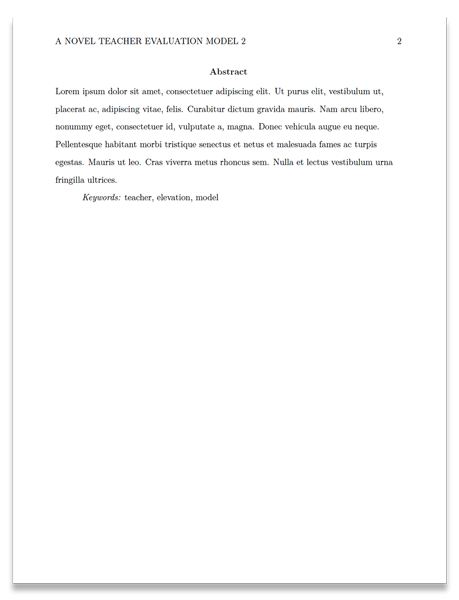
- Introduction: In the introductory paragraph, sufficiently address the problem and premise upon which the research was focused in.
- Methodology: Here, explain in detail how you did your research, and the mechanics that you applied to conduct your investigation.
- Findings and Results: Explain your findings and the results that have surfaced from your investigations or experiments. This can be followed by a short discussion as well.
- References: State the list of the sources your referenced to build your paper in an orderly fashion. References should start on a new page, with the page titled (References), and the sources listed in alphabetical order.
- Appendix: The appendix is a section at the end of a research paper where you include extra information that doesn't fit into the main. It should start on a fresh page labelled “Appendix”, and should be formatted in traditional paragraph style and can incorporate text, figures, tables, equations, or footnotes.
2. Writing Style and Language
APA styled research papers should be written formally. For such research papers, intended audience is other academics, students, and colleagues. Thus, you need to communicate with clearly and professionally. Avoid using slangs, referencing pop culture, literary devices like metaphors, irony, and imagery, and humor in your paper.
The key is to be direct and straightforward instead of using complex phrasing, use technical terms where appropriate, and avoid biased language and use gender-inclusive language, and avoid euphemisms. The writing should be as clear and as neutral as possible.
3. Mechanics
APA style manuscript formatting states that double-spacing and 8.5 x 11 paper with 1-inch margins should be employed. A clear typeface, like Times New Roman in size 12pt, is recommended. There are a large number of specific recommendations for proper manuscript formatting of an APA style.
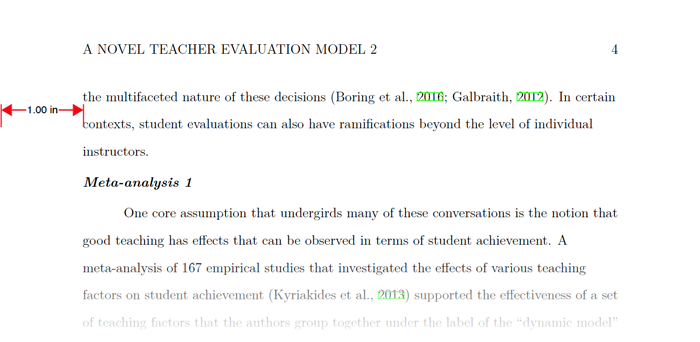
Some of the most common recommendations include the following:
- Use title case for all headings
- Keep your paper title between 10 to 12 words, and centered
- Use numerals for numbers 10 and above
- Spell out a term before introducing its abbreviation in parentheses; for example, The United Nations for "UN" first
- Left align all tables and figures
- Use in-text citations for sources
- Use footnotes sparingly
- All paragraphs in the body are indented by 0.5 inches
- Include one space after most punctuation marks
- References should start on a new page, with the page titled "References"
Citations and References
Citations are a way of giving credit when ideas, concepts, or statistics in your work came from another source. It gives your readers the information necessary to find that source again. Whether you use sources such as books, journals, newspaper articles, videos, or websites in your research, you must give credit to the original author by citing the source.
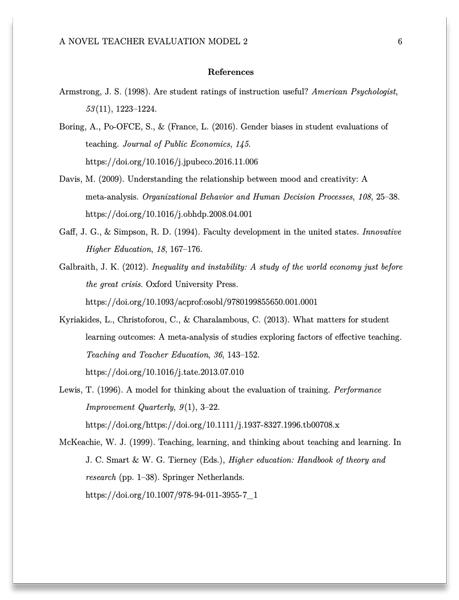
As stated above, the in-text citation in APA papers can be stated in 2 ways; as a parenthetical citation or narrative citation. In a parenthetical citations, all the information is stated in parentheses after the information. In a narrative citations, the name of the author is stated in the sentence, followed by the year, and then the page number after information if applicable.
How To Add APA Citations In A Paper
APA citations can be added into your paper through BibTtex. For instance, JotterPad's BibTex Citation Management plugin allows you to add, manage, edit and print your citations. It helps to effectively organize your references and citations in your work, without the hassle of needed to manually input and alter your references.
You can manually key in citations by adding a field, importing BibTex files (.bib), or pasting the BibTex citation into the citation manager to thereafter include it in the Markdown documents.
If you download BibTex files, import the file into Jotterpad with the Bibliography manager. Thereafter, you can include the data required and include citations in your Markdown document seamlessly.
To include in-text citations, click add in your Markdown documents, and the suggested citations will appear for you to choose from. If you would like to suppress the citation in order to prevent a repeated citation from appearing, add a minus sign to the citation.
When the final draft of your APA paper is ready, key in the preferred bibliography style in the Markdown document's YAML Front Matter. E.g. biblatexArg: style=apa to print bibliography in APA style, and references and citations will be printed in an orderly fashion.
How to Create An APA Reference List
For APA papers, your entries in your reference list entry need to have a matching corresponding parenthetical or narrative in-text citation. Cite every reference list entry in the text and vice versa. The author's name and year of publication in the reference list would be used to create a corresponding in-text citation.
As a general guideline, the following steps would make sure that you have corresponding entries in your reference list and within your work:
- Read the work that you want to cite or reference thoroughly
- Identify an idea you would like to include in your work
- Craft a sentence about that idea, in a way that retains the original idea or concept or as a direct quotation
- Write a reference list entry for that work
- Add in the corresponding appropriate in-text citation
- Repeat as needed.
Writing an APA paper using templates
JotterPad's various APA templates can effectively keep your formatting in check for you while you write. Whether you are a student looking to write a student paper for submission, or if you're looking to write a professional research paper, or you are working on an article for publication in a journal, JotterPad's APA templates can serve your writing needs. While it converts Markdown into APA formatting seamlessly, key APA identifiers such as the title page organization, headings, abstract, keywords, citations styles, and so on will also be managed while you work on your content.
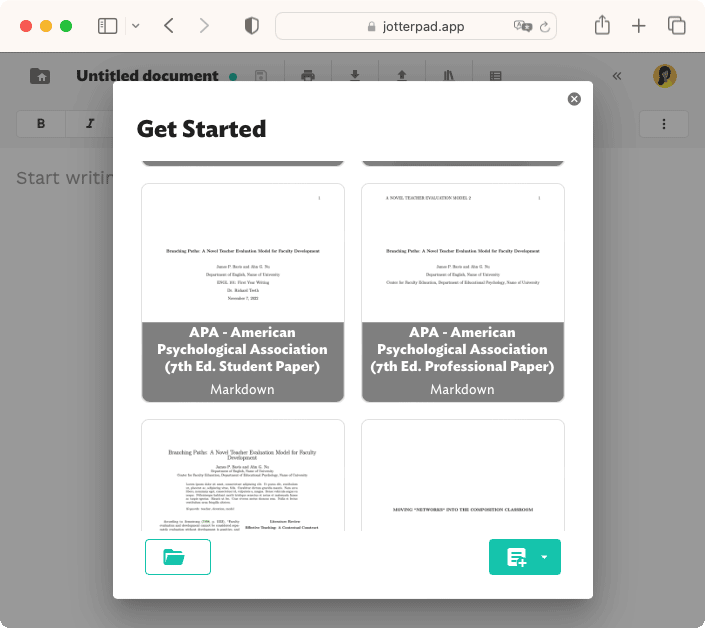
These templates are also equipped with the BibTeX citation management tool. The BibTex Citation Management tool in the templates allows you to add, manage, edit and print your citations and bibliography. It helps to effectively organize your references and citations in your work, without the hassle of needed to manually input and alter your references.
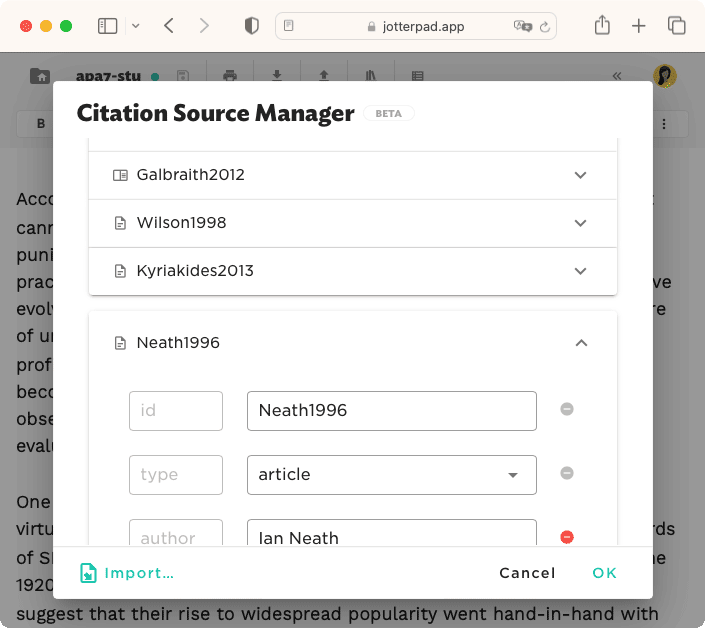
With a better understanding of the margins to be worked within and the guidelines that need to be abided by, putting together a well-organized research paper would be a little less distressing.
Together with this guide and JotterPad templates, there are numerous online sources that can help you format your paper and your citations. Referencing the official APA Manuals and approaching professors and advisors for help is recommended. With experience and conscientious referencing, writing in APA style could be second nature.


